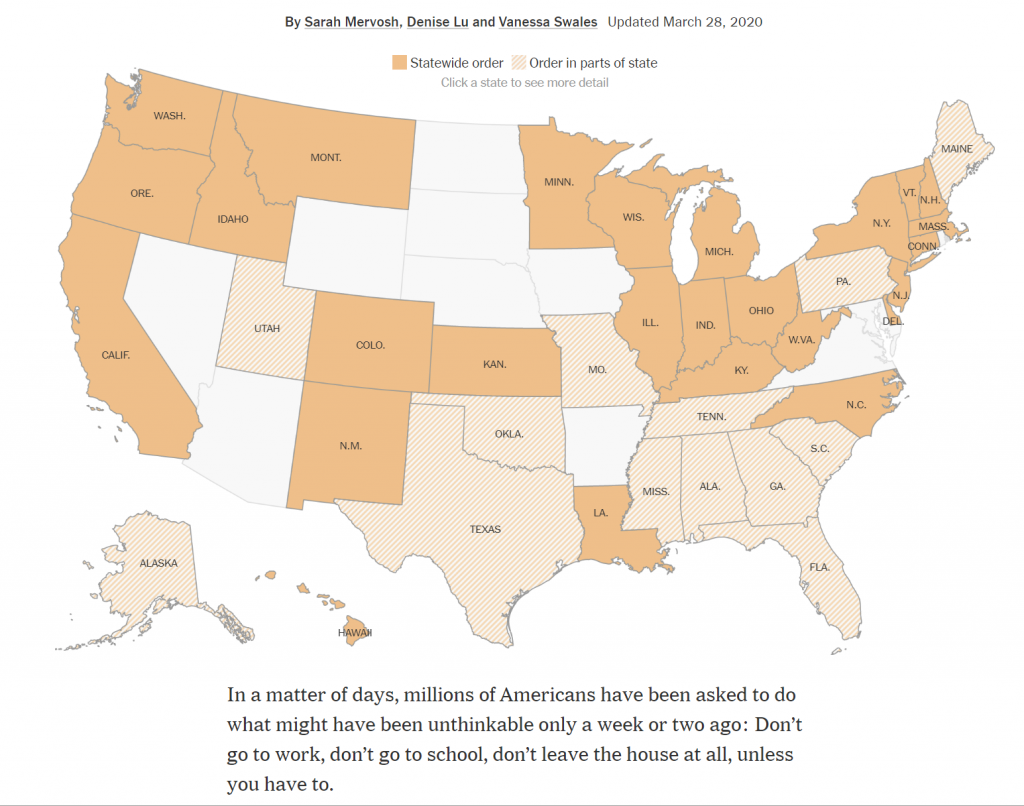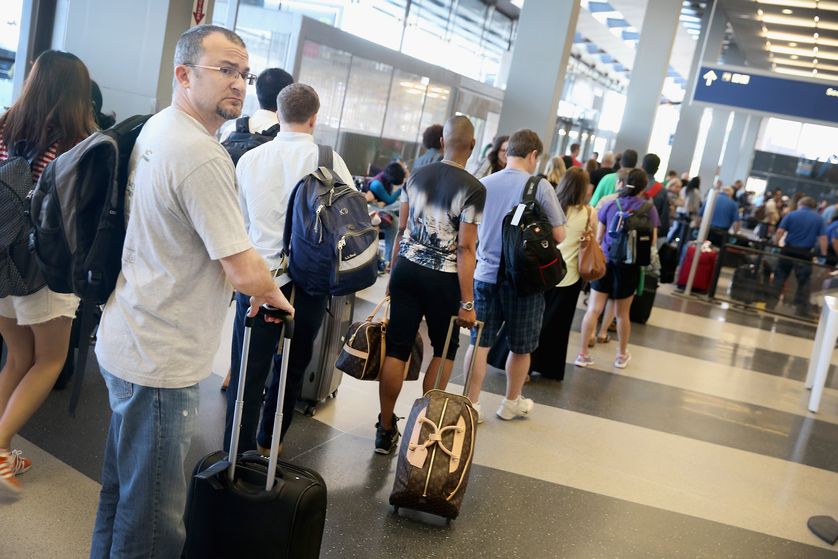March 2020: I’m reading lots of pieces (for instance here, here and here) about the COVID Class of 2020, detailing many real and heartbreaking stories of the traditions and moments that high school seniors are losing. And on social media, I’m reading wonderful and genuine expressions of sympathy, like this one on Nextdoor:

No question: high school seniors have it particularly rough. I would have hated for the world to go into suspension and lock-down in the final months of high school.
Their culminating senior year is cut short. Proms postponed. Parties and get-togethers cancelled. Cherished traditions skipped. Sports tournaments cancelled. Tournaments and competitions cancelled. Romances curtailed. Long-promised milestones, often including trips and celebrations, erased. Graduation ceremonies altered and postponed. Some have anxieties about certain colleges perhaps even rescinding admissions due to incomplete transcripts. (I sure hope those fears are unfounded; if colleges do, that would be really outrageous. I hope and expect they’ll be forgiving and lenient, and currently have no reason at this writing to doubt this.)
For graduating seniors, so many important opportunities to bond with classmates and cement lifelong friendships have been erased and can never again be re-created.
Thinking back to senior year of high school, those last few months as summer approached were so important in creating lifelong cherished memories. I grieve their loss with them. For them, just as freedoms to go explore the world are finally opening up, the stay-at-home order says “not so fast.”
As June arrives, we will see many more articles about this COVID Class of 2020, as we should. From Twitter to Facebook to Nextdoor, I’m seeing those sentiments echoed.
Yet in this wave of well-earned empathy, I hope we do not also forget about the class right behind it. High school juniors have so many “take action to plan the next stage of your life” pressures, and must be feeling a lot of anxiety right now.
The constraints of near or total lock-down are no doubt multiplying the anxieties in an already anxious, always pivotal school-year. The Class of 2021 is seeing the messages of empathy toward seniors too, and may soon start to wonder if people are understanding what’s happening right now to them.
Have Some Empathy for High School Juniors, Too
I know I risk inadvertently framing this as some kind of “competition” here, and this is truly not what I’m intending to do. The purpose of my piece is “YES, and…”, not a senseless “who has it worse” contest.
Permit me, though, to turn for a moment to the cohort immediately following the graduating class of 2020: America’s high school juniors. Because I’ve not yet seen a single profile of a their COVID-impacted world in media or social media.
Do you remember junior year, eleventh grade?
It’s the year that most adults have been telling you, since before you set foot inside high school, that it’ll be one of the most consequential of your academic life, especially if you wish to go to your dream college. It’s a year that most schools offer the most challenging and intellectually stimulating classes, and open up the widest opportunities for you to get involved and demonstrate leadership. It’s a year that a lead part in the school play finally becomes a reality, or first chair at violin, or captain of the sports team. It’s a year that many authority figures and school cultures communicate is incredibly consequential. With everything from AP classes to SATs/ACTs, competitions, sports and extracurriculars, for those whose future has long been set on going to college, it’s a critical year.
What happens when that world is completely (or nearly completely) put into suspension for some, through no fault of their own? Just to frame the relative timelines here, for those seeking to go to a 4-year college, most applications are due generally between October 31st and (at the latest) about late February. Most high school juniors begin to take standardized testing in the spring of junior year.
So, across the nation, high school seniors were 3+ months past submission of their college applications, awaiting results in the mail (or by email), as their schools began to go to remote-only or shutdown (or for some — had no change.) Seniors’ applications and academic records from the universities’ points of view, were relatively unimpeded by shutdowns or remote schooling. Most received their college admission status letters (acceptance or rejection) last week.
For high-school juniors, though, the shut-down occurred smack in the middle of the highest-intensity academic and extracurricular moments of most of their entire high school experience. Unlike high school seniors, their college applications are only a few months away. And they must be thinking — what all might I say? Do I write that I had worked hard to line up several of these opportunities, but they suddenly vanished, due to reasons completely beyond my control? And if so, how does that make me any different than any of the millions who also experienced this loss?
And what about the many seniors in the Class of 2020 who will be taking gap years? If a sizable proportion of the Class of 2020 takes a gap year, does that reduce the number of college spots for the class of 2021? How will colleges equitably handle these constraints?
My wife and I have a high school junior, and of any of us in the family (we have a college freshman, a high school junior and a seventh grader), his life is by far the most up-ended right now. And that’s not just my opinion — each of our kids strongly agrees. He’s dealing with it in stride, is lucky that his school has adapted so well to remote-learning. And he’s finding ways to volunteer and help his classmates and community, as well as some delicious baked goods at home, as he attempts to master the art of bread-making, doing his best to bring comfort to all of us, as he has throughout his life.
He’s very lucky: his school is continuing with their academic schoolyear. He’s able to participate remotely every day of the week. Homework, he reports, has roughly doubled, but he’s keeping up. He’s doing his culminating American History essay, which, for his school, is a thesis-level project with legendary requirements and tough grading. No question, he’s one of the luckiest ones. And fortunately, he realizes it.
What I’m saying, though, is that as we lament the losses of the graduating class of 2020, let’s also remember that high school juniors are also feeling tremendous pressures and anxieties. Yet we and they are also watching all the deserved but near-exclusive media focus on the losses of the class ahead of them.
Take a moment and remember back to how important your junior year of high school was, with respect to setting the course for the years which followed.
And seniors in the Class of 2020 (and parents of seniors), please take a moment to look back one year ago in your calendar to see what you and they were doing. You’ll find exams such as the ACT’s and SAT’s. You’ll find major culminating academic and extracurricular projects. Spring sports. College tours and several information sessions. Excitement building about those possibilities; maybe even sitting in on a class. Theater performances. Volunteering. Sports recruiting and tournaments. Maybe jobs, interviews for summer jobs, conferences and more. None of these are happening, nor have happened in the Seattle area for weeks now.
The College Board cancelled SAT’s for March and May here in Seattle, have scheduled one for June but given the ongoing uncertainties, it may well be cancelled too [update: they were.] The College Board has not been very specific about future opportunities, nor in any way flexible about adding new sites or locations. It’s highly questionable at this writing that June exams in the Pacific Northwest will even take place. Awfully tough conditions under which to motivate oneself to study and excel.
For the college-bound, junior year is such a vital year for students to continue to demonstrate through their actions in the community who they are. By junior year, they’ve finally come of age enough for some of those opportunities to be further opened up to them. Some were interviewing for summer internships. Many were scheduled to take SATs, ACTs, final exams, final projects, AP classes, extracurricular activities, theater performances sports competition and more.
Spring of junior year is also when many tour college campuses, go to information sessions about the next stage of your life, “shop for” and identify college fit (and even preference of major.) It’s when many have enough seniority to lead and participate in clubs and activities, help others through volunteering, and so much more.
In just five or six short months, many of these students will be applying to college. Not being able to leave the house puts a real damper on demonstrating who they are in this very important year.
Impact Highly Variable Depending Upon Region, Community and School
Regional Differences Are Pronounced
If you’re a high school junior from a region that went to “remote only” or even entire school shutdown and “stay at home order” in early March, as we did here in Seattle, you may well end up with incomplete marks on your transcript, or you may have to do summer school. And certainly, you have had many opportunities curtailed.
And yet, come the autumn, you may also be competing with many students from around the world who had no such restrictions, or very light restriction.
To visualize this, The New York Times is out today with an article showing the varying impacts and “stay at home” orders, by state. This is as of the third week of March, 2020:

Some Schools are Shut, Others are Remote-Only, Others are Open
In addition to all the stresses of junior year and the next steps in life, another anxiety-producing aspect of this is the highly uneven nature of restrictions and opportunities around the world, and even within school districts. My son’s school has gone remote-only and done so very capably. He is incredibly fortunate. He will finish this year with a completed junior year academic record. But the Seattle Public School system has decided to shut down entirely, a decision that I really disagree with.
Impacts of course vary widely by socioeconomic group. So many families are up-ended, with layoffs and closures. Many children rely upon school meals, and now need to find other options. Developmentally delayed students need the attention of an experienced professional, and homeschooling for many is inadequate. The list goes on — I’m not even capturing part of it.
The City of Seattle decided to shut the whole school system down, relying upon parents who are able to homeschool their children, while most private schools in the area have been able to stand-up remote schooling in very short order. I realize that the Seattle Public School System’s decision is due to equity issues about uneven access to technology, and I appreciate that. But why are we skipping actual efforts to bridge these gaps with a loaner program, together with, say, a gym in each school set up with social distancing and remote-capable computers and headphones? This is a city with tons of tablets and wifi-capable notebooks in people’s homes, and no doubt thousands of Android and Windows and iOS remote-capable tablets in warehouses. I’d happily loan one and fund the rental of hundreds more. Numerous inequalities exist in our society. I don’t think the right way to address them is to optimize to the least-capable and assume those issues cannot be addressed.
This isn’t a grief competition. There is no finite amount of grief which must be fought over. But I hope the journalists who want to tell the story of the plight of the Graduating High School Class of 2020 also spare a moment to tell the stories of the class that’s just behind it.

